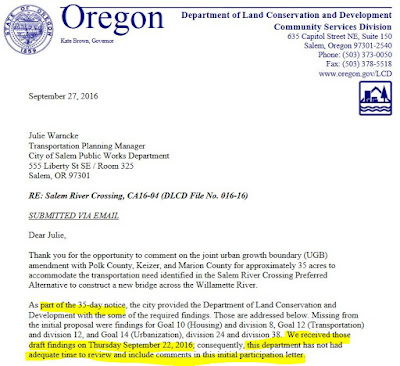 |
| from the Introduction |
Why doesn't this Q & A represent the best state of the research on a given topic? This is a strange thing to admit from the start - unless that's an indirect admission that the document is already biased.
From here, based on the section on Induced Demand, it has looked like apologetics for the bridge, and not a neutral analysis. So omitting "seminal work" could be consistent with a pro-bridge bias.
But more than this, they say "providing in a single document all the information necessary...is a daunting undertaking."
But isn't "providing all the information" what the draft Environmental Impact Statement was supposed to do?
It is possible to read this also as an admission that the DEIS wasn't written to do what it was supposed to do, but was a biased document with a rigged process.
These admissions or concessions in the introduction sound humble and inviting, but they might instead be signs of deeper rot, an indictment of the whole preceding SRC process.
 |
| Lack of notice, DLCD preliminary comments |
 |
| page one of Planning Goal 1 |
That looks like an indirect admission that the SRC process has been structured to be opaque, hostile to citizen involvement, and rigged for a pre-determined outcome.
Finally, if the SRC was an unambiguously great or necessary project, writing a Q & A would not be so difficult. It would be straight-forward. That the Q & A is so tricky suggests the scope of real questions and uncertainty about the SRC. It's a sign that the case for it is weak, not strong.



No comments:
Post a Comment